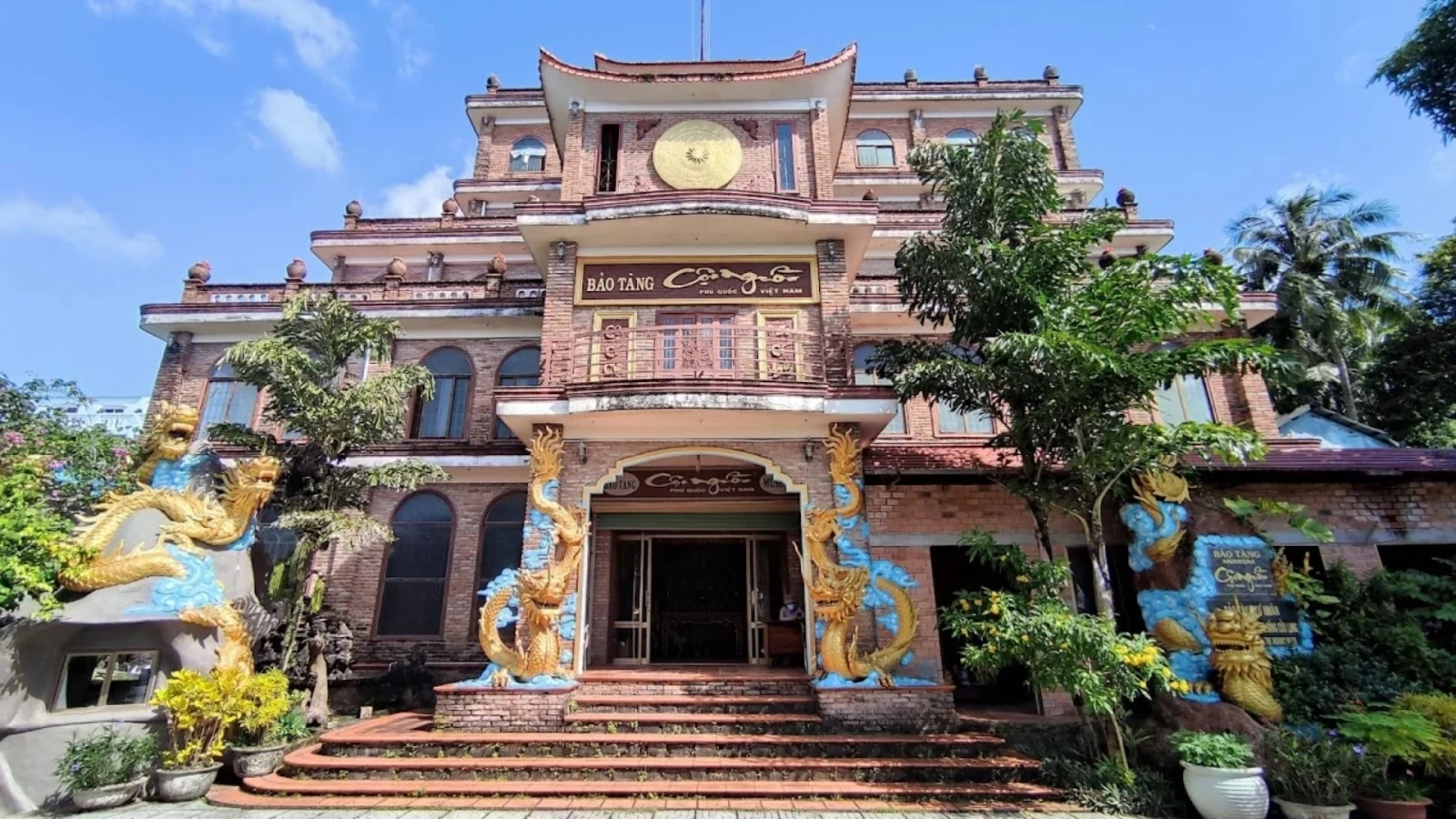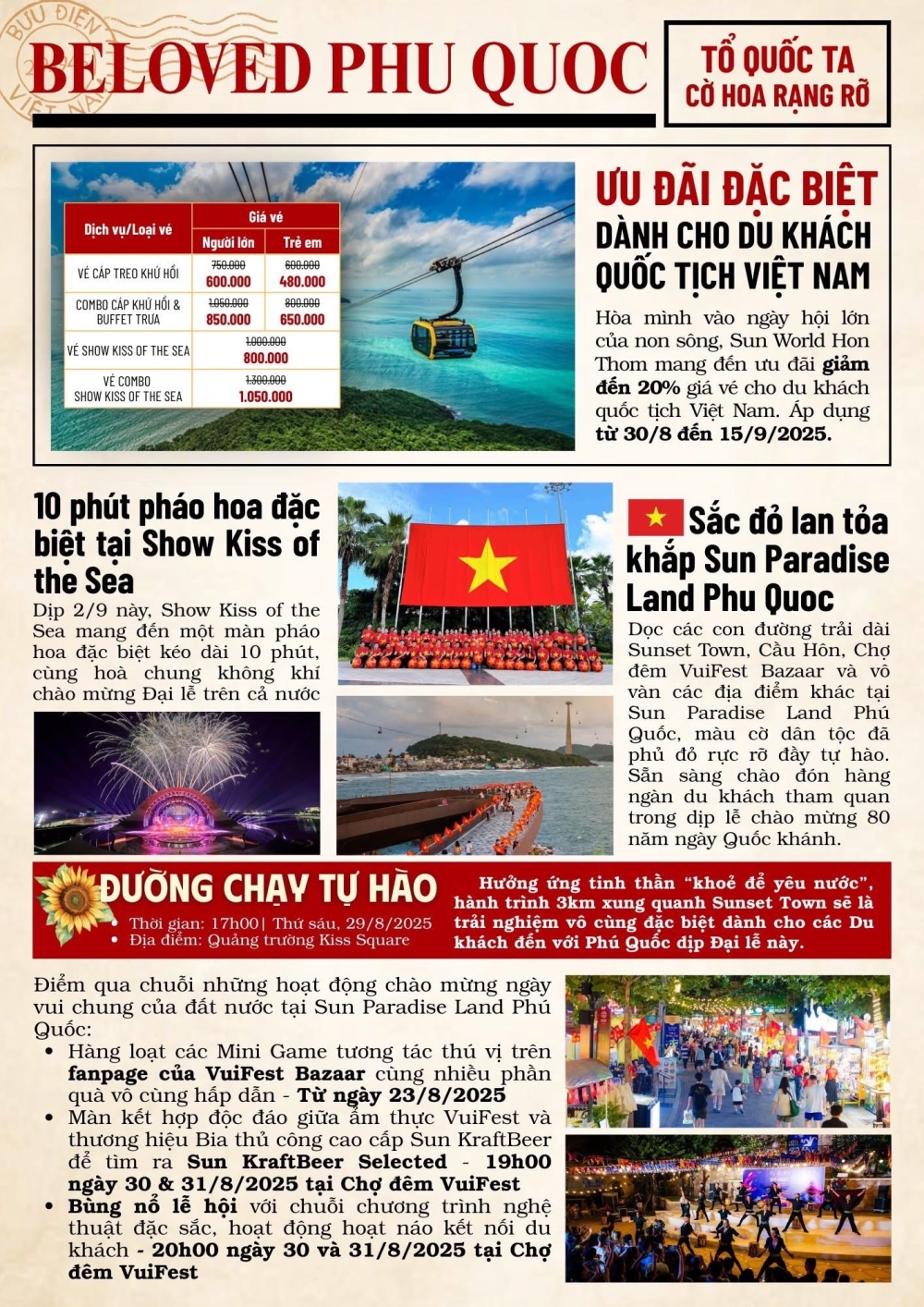1. Overview of the Origin Museum (Phu Quoc)
1.1. Where is the Origin Museum (Phu Quoc)?
Origin Museum (Phu Quoc) is one of the prominent cultural destinations on the tourist map of the Jade Island. It is located at 149 Tran Hung Dao Street, Quarter 7, Phu Quoc Special Administrative Region, An Giang Province. The museum is conveniently located for tourists to easily travel and combine visits with many other places in the island's center.
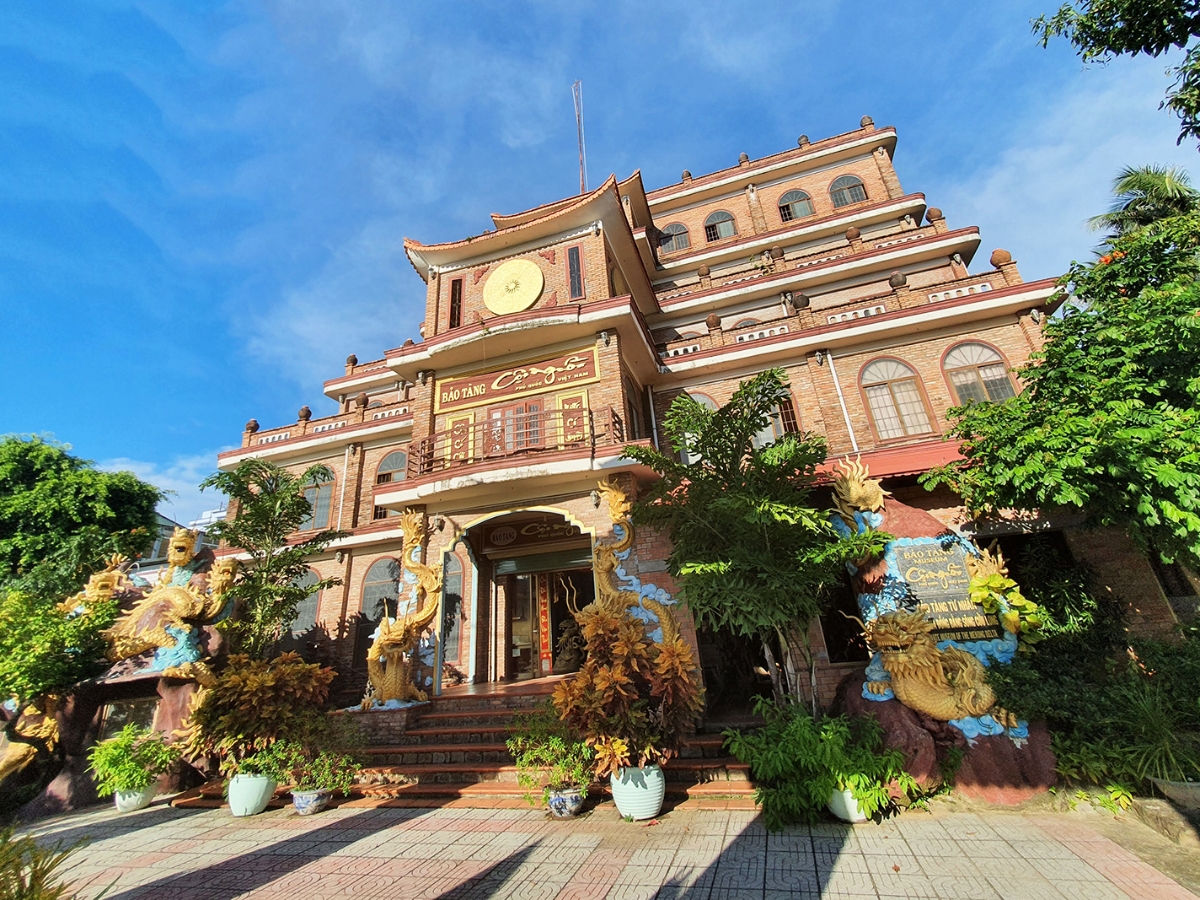
Coi Nguon Museum, neighborhood 7, Phu Quoc special administrative region, An Giang province. (Source: Collected)
1.2. History of the museum's formation
The person who conceived and founded the Coi Nguon Museum (Phu Quoc) was Mr. Huynh Phuoc Nghe – a young man passionate about local history and culture. After graduating from Open University and working as a tour guide, he realized the need for an exhibition space where visitors could better understand the origins, people, and nature of the Jade Island. From there, the idea of building a museum was formed, and in 2009, the construction officially began.
After many years of development and collection, the Coi Nguon Museum (Phu Quoc) has become a repository for thousands of precious artifacts, vividly recreating the story of the history, culture, and life of the people on the Jade Island. It is not only a destination with unique cultural value but also reflects the dedication of a son of Phu Quoc who devoted his love and pride to his homeland.
1.3. Cultural value and significance of the museum
The Coi Nguon Museum (Phu Quoc) is a place that vividly preserves and recreates the cultural values, history, traditional crafts, and spiritual life of the Jade Island's residents through many generations. The exhibition space is scientifically arranged, showcasing thousands of rare artifacts associated with the formation and development of Phu Quoc, from ancient tools, ceramics, jewelry, to models of fish sauce production, pearl farming, and seafood fishing. Each artifact carries its own story, contributing to a clear depiction of the diverse and rich cultural landscape of this island.
Beyond its preservation value, the Coi Nguon Museum (Phu Quoc) also serves as a bridge between the past and the present, helping younger generations and visitors better understand the traditions, history, and people of this place. It is an ideal destination for those who want to delve deeper into the local culture, feel the hospitable and resilient spirit, and the love for their homeland of the islanders. Therefore, the museum is not only a source of pride for the people of Phu Quoc but also one of the distinctive cultural symbols contributing to the preservation and honor of the spiritual heritage of the Jade Island.
2. Exhibition areas at Coi Nguon Museum (Phu Quoc)
From 2009 to the present, the Coi Nguon Museum (Phu Quoc) has collected and preserved over 3,000 precious artifacts, including many centuries-old antiques recognized by UNESCO. Visiting the museum is not only a journey to admire unique antiques but also an opportunity to learn about history, explore the origins, and the cultural values of the heritage that has shaped the identity of the Jade Island today.
2.1. Exhibition area for ceramics, stones, porcelain, bronze, and petrified wood
This exhibition area houses a collection of 2,645 artifacts selected from 9 private collections, including ceramics, porcelain, stones, bronze, and petrified wood dating from the 7th century BC to the Ly, Tran, Le, and Nguyen dynasties. Additionally, there are precious specimens from Thailand and China from the 15th-16th centuries. Each artifact is a vivid testament to the cultural life, daily activities, and handicraft skills of ancient dynasties, embodying the wisdom and effort of humanity over thousands of years of history.
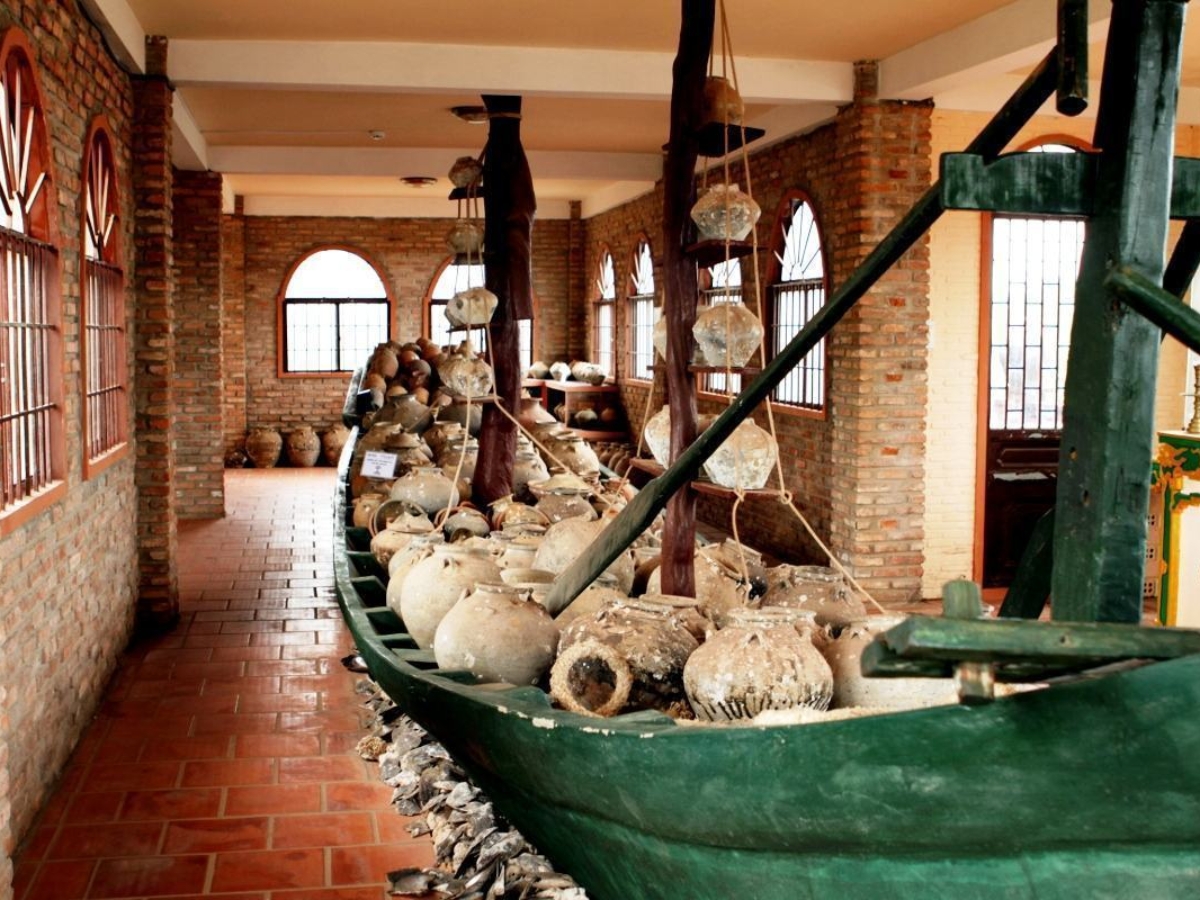
Exhibition area of ceramic artifacts with great historical and cultural significance. (Source: Collected)
2.2. Exhibition area of Phu Quoc's marine and forest collection
This area introduces visitors to the diverse ecosystem of Phu Quoc Island with over 20 types of fossilized rocks and mosses, more than 10 types of coral, 90 types of shells, and 20 precious artifacts crafted from dugong bones, whale bones, and wild boar tusks. Each specimen clearly recreates the wild, vibrant beauty of Phu Quoc's nature.
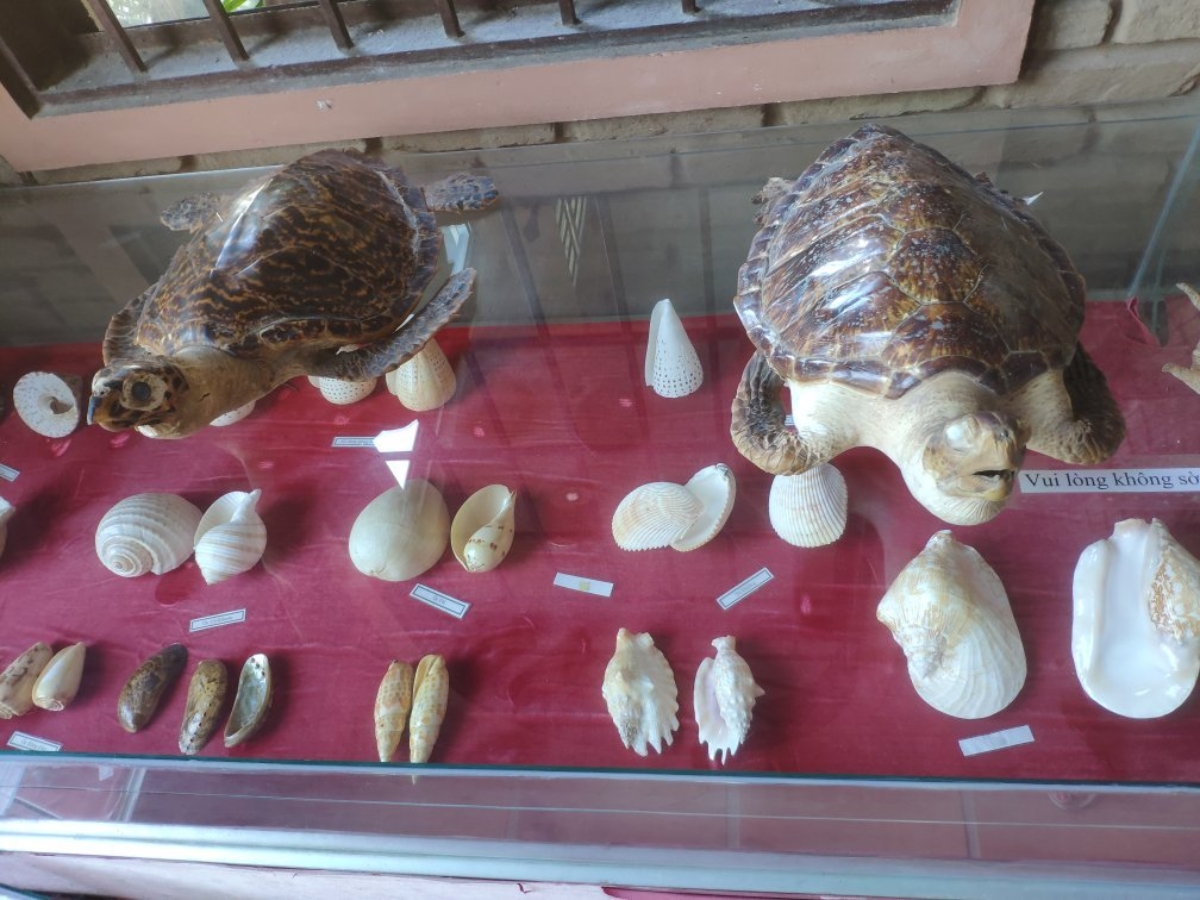
The sea forest collection is imbued with the colors of Pearl Island. (Source: Collection)
2.3. Exhibition area of mountain bamboo roots, apricot, mountain guava, and ironwood roots
The collection includes 30 artworks and 64 sets of tables and chairs crafted from mountain bamboo roots, apricot, mountain guava, and ironwood roots. All were collected and created over more than 10 years. Each product is an artwork imbued with a folk spirit, showcasing the skillful hands and creative minds of local artisans.
2.4. Exhibition area of local traditional crafts
Here, visitors can admire over 100 artifacts recreating the characteristic crafts of the Phu Quoc people, such as fish sauce making, seafood catching, pearl processing, and traditional stilt house living. These simple items, however, contain a rich cultural heritage, helping viewers better understand the diligent working life and the spirit of connection to the sea of the island's residents.
2.5. Exhibition area about the land and people of Phu Quoc
This collection gathers over 300 documents, books, and folders in Vietnamese, English, and French. This is a valuable source of information for researchers to delve deeper into the history and the formation and development process of Phu Quoc. Prominent among the exhibits are artifacts related to Ms. Kim Giao, who is revered by the people as a patron goddess for the islanders during the period of reclamation. She led the people to settle, trade freely, and be exempt from taxes under the Nguyen dynasty, contributing to making Phu Quoc island more prosperous and flourishing.
3. Opening hours and ticket prices for Coi Nguon Museum (Phu Quoc)
3.1. Opening hours
Coi Nguon Museum (Phu Quoc) is open to visitors from 7:00 AM – 11:00 AM and 1:00 PM – 5:00 PM, all days of the week. The visiting hours are divided into two sessions, allowing visitors to flexibly choose a time slot that suits their schedule. Whether arriving early in the morning or late in the afternoon, visitors can leisurely admire the rich exhibition space, explore the cultural stories, history, and unique life of the islanders, vividly recreated through thousands of precious artifacts at Coi Nguon Museum (Phu Quoc).
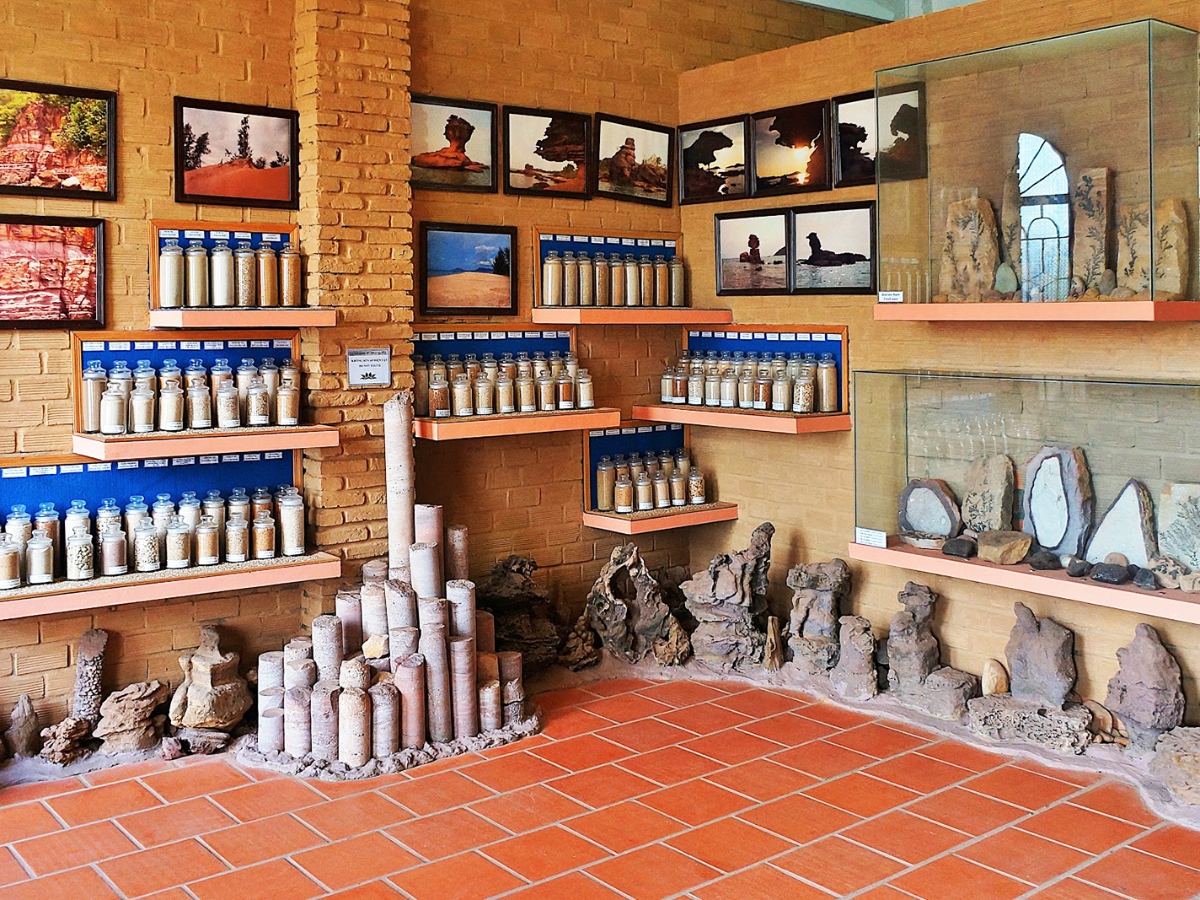
The Origin Museum is open for visits all days of the week. (Source: Collected)
3.2. Reference ticket prices
The admission ticket to the Origin Museum (Phu Quoc) is 50,000 VND/person, a quite reasonable price for a unique cultural destination rich in historical value. With this admission ticket, visitors can freely explore the entire exhibition area, learn about thousands of artifacts collected over centuries, and listen to interesting stories about the formation and development of the Pearl Island. This price not only gives visitors the opportunity to experience a unique cultural journey but also contributes to maintaining and preserving the exhibition space that bears the historical imprint of Phu Quoc.
4. Combine visits to famous tourist attractions in Phu Quoc
After visiting the Origin Museum (Phu Quoc), visitors can combine exploring many other attractive destinations to make the journey richer and more complete. In the bustling Duong Dong area, visitors can visit Duong Dong night market to enjoy fresh seafood. Then, continue moving to Dinh Cau to admire the famous spiritual structure associated with the lives of the islanders. Or spend time strolling along Ong Lang beach, which is likened to a "hidden gem" with fine golden sand and calm, clear blue water.
If you love nature, you can head to the North Island to explore Bai Dai. This place impresses with its long coastline, clear water, and peaceful atmosphere, very suitable for those who want to fully enjoy the rustic and relaxing beauty of the Pearl Island. Afterwards, you can visit Rach Vem fishing village to see the vibrant "starfish kingdom", immerse yourself in the simple life of fishermen, and enjoy delicious fresh seafood. Don't forget to stop by Phu Quoc National Park to breathe in the fresh air, listen to birds singing amidst the green forest, and explore the most diverse primary forest ecosystem in the South.
Moving to the South of the island, visitors will admire a more modern and vibrant Phu Quoc. The first stop is Khem Beach, a beach famous for its cream-like fine white sand and turquoise blue water. Here, visitors can swim, walk on the white sand, participate in kayaking, or simply relax under the breezy coconut trees, watching the clear turquoise water. Next, visit Sunset Town to stroll, shop, enjoy cuisine by the sea, and watch the brilliant sunset at Kiss Bridge. In the evening, visitors can enjoy the Kiss of the Sea show with an impressive display of light, water, and fireworks, creating an unforgettable experience.

Admire the beautiful sunset at Phu Quoc Kiss Bridge. (Source: Sun World)
If you love more exciting activities, Sun World Hon Thom will be an ideal stop. Visitors will experience the world's longest sea-crossing cable car, admiring the panoramic view of the Pearl Island from above. Upon arriving at Hon Thom, take time to play at Aquatopia water park with over 20 thrilling games, challenge yourself at Exotica village, or participate in sea activities such as snorkeling, kayaking, parasailing, or jet skiing.
5. Some notes when visiting Coi Nguon Museum
When visiting Coi Nguon Museum (Phu Quoc), visitors should note some important points to make the trip smoother and more meaningful. First, choose polite, modest attire and maintain a serious attitude when visiting. Avoid talking too loudly, running, or making noise in the exhibition area to ensure a quiet space and respect for others.
Food and drinks are not served within the museum premises, however, visitors can bring water or snacks to consume outside the exhibition area. Additionally, always pay attention to general hygiene, do not litter, and comply with the museum's regulations to contribute to protecting the landscape and preserving the precious artifacts here.
After visiting, guests can stop by the souvenir shop area of Coi Nguon Museum (Phu Quoc). Here, many characteristic products of the Pearl Island are sold, such as pearls, jewelry, decorative items, and exquisite handicrafts. This is a great opportunity for you to choose meaningful gifts for your loved ones and friends, concluding a complete and memorable visit.
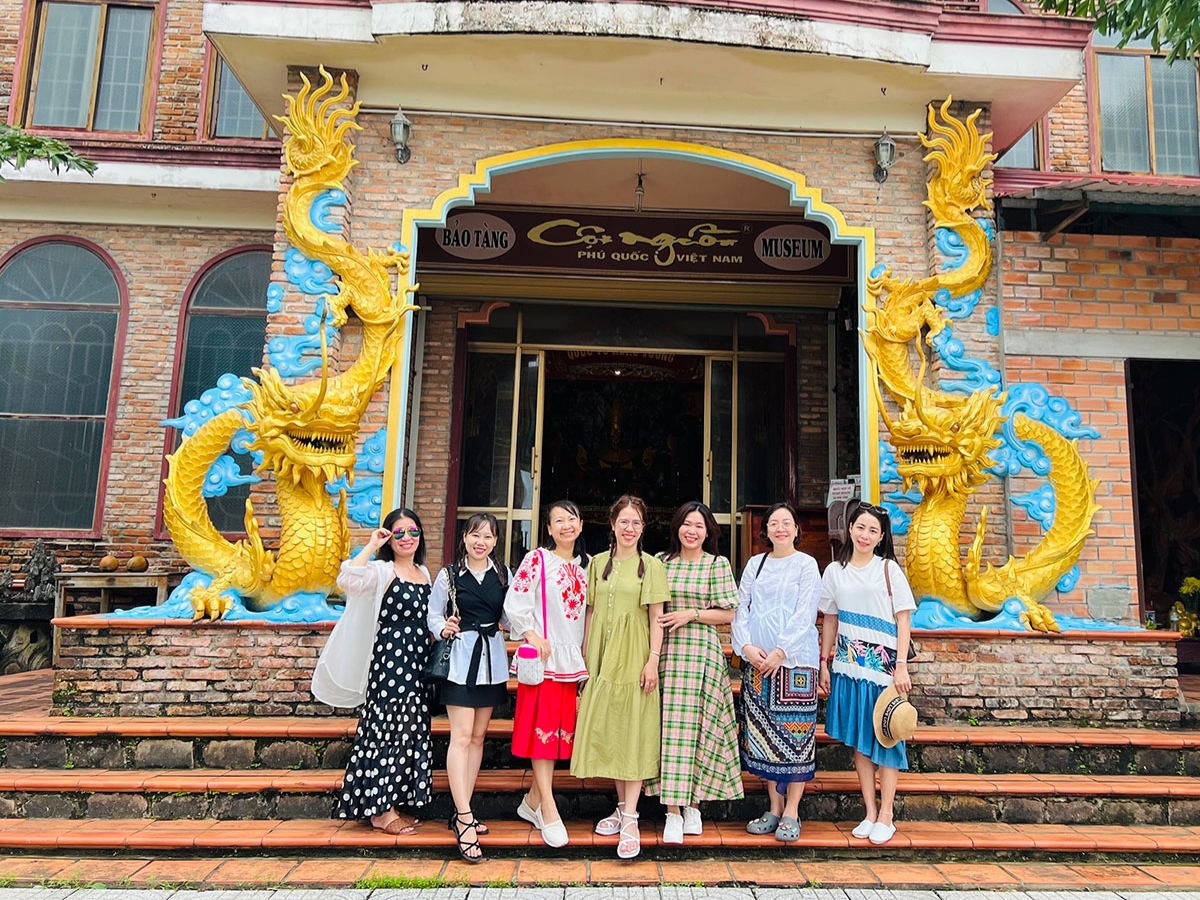
Some experiences and notes when visiting Coi Nguon Museum. (Source: Collected)
With a rich exhibition space and thousands of precious artifacts, Coi Nguon Museum (Phu Quoc) is a must-visit destination for those who love culture and history. This place not only helps visitors understand more about the origins, people, and lives of the Ngoc Island residents but also brings authentic and emotional experiences. If you are planning a trip to Phu Quoc, take the time to visit the museum, listen to the stories of this land, and discover the unique cultural values preserved through generations.




